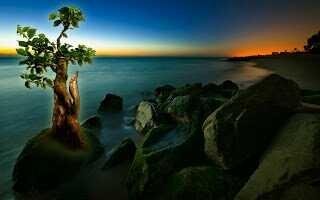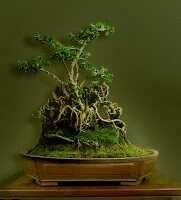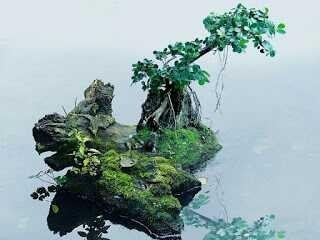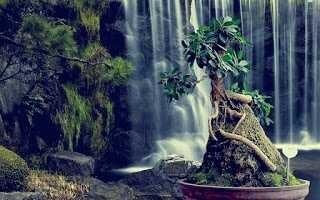TECHNIQUES AND THE ART OF BONSAI FOR BEGINNERS
ART BONSAI FOR BEGINNERS
Bonsai is a familiar name for fans of dwarf trees in any country. Bonsai on kanji is a tree (Sai) planted in a pot (pot).
In addition to bonsai as a beautiful and interesting scenery, bonsai can also make a tempting income, where the way we treat and make the shape so attractive, elegant and beautiful, and old age make bonsai so looks more valuable.

BONSAI RECOGNITION FOR BEGINNERS
HISTORY OF BONSAI
Plants that are maintained specifically in pots for decades, certainly can not grow normally. Trees that originally could grow several meters in height with special maintenance growth can be a credible called bonsai, where the tree can be given various shapes.
The art of "dwarf trees" actually began to be developed in China since the eleventh century, beginning to enter Japan in the fifteenth century. In Japan named Bonsai.

The art of bonsai from Japan after World War II spread to the western world and the United States. Eventually other countries participate in tree stunting. To be able to distinguish bonsai from other plants, we need to know the characteristics, size and style (style) bonsai, and how to maintain it.
BONSAI CHARACTERISTICS
Bonsai is a small tree in the pot as a result of stoning and training (the process of perfecting the shape of the tree), which generally takes years. Training is the most important element and the main technique in the process of making bonsai that continues throughout the life of the tree.
Not every dwarf tree in a pot can be called a bonsai. It's just that the improvement is made, especially the shape, so it can be called bonsai, because to be called bonsai, the tree must meet 3 conditions, namely:
Size: small or dwarf. Where this bonsai is made from a certain type of plant that grows in the wild, it is generally high ...

styles based on their shape, the overall shape, can be grouped into five basic styles (Fig 1), each consisting of a single trunked tree.
In Japanese, the five basic styles are called:
Chokkan (upright, formal upright)
Tachiki (upright, informal upright)
Shakan (tilt, slanting)
Han-kengai (half hanging, semi cascading)
Kengai (hanging or like a small waterfall, cascading)
In addition to these five basic styles, there is still one more force, the moyogi (form tree, figure tree), is a freely adaptation of the perpendicular, erect and oblique style, regardless of the usual pattern prevailing for the forces. However, the moyogi style is not or has not been accepted by the connoisseur, despite its many fans.
The various basic styles above evolve into the various styles that now exist in the bonsai world (Fig.2), consisting of:

Bankan (coiled, coiled)
Hokidachi (in reverse broom)
Fukinagashi (it grows tilted and all its branches are only on one side of the trunk, as if a continuous breeze from one direction)
Neagari (visible roots)
Nejikan (twisted, twisted)
In addition to grouping according to style, bonsai can also be classified according to the number of trees planted in one pot
TREATING & SETING BONSAI
the beautiful bonsai of the shape at the time of purchase, certainly high price, but a few months later can disappoint the owner, because many branches and new branches that grow everywhere or branches and old branches that grow long, so the beauty of the bonsai is lost. How to fix fix the bonsai by way of pruning, trimming, and wiring..!
Go here https://steemit.com/@a-a-a to get your post resteemed to over 72,000 followers.
That's what I'm capable of, I know learning from all the teachers again.
Nice read. I leave an upvote for this article thumbsup
he meant
know learning again.